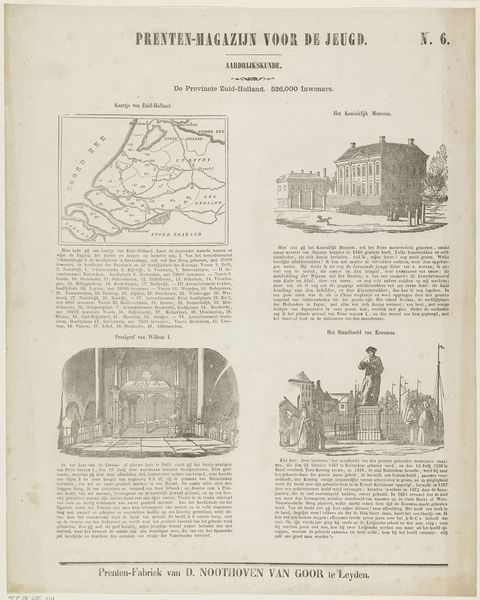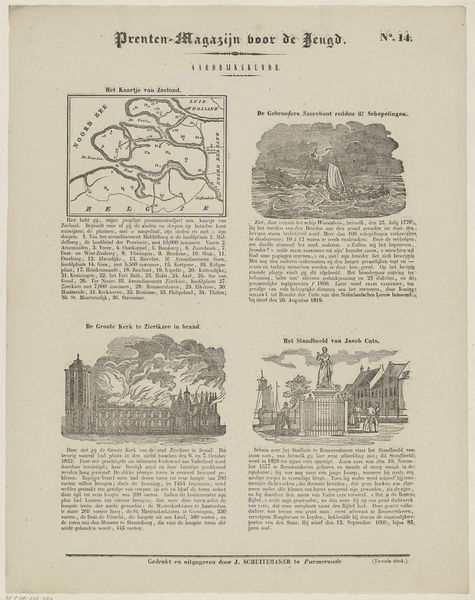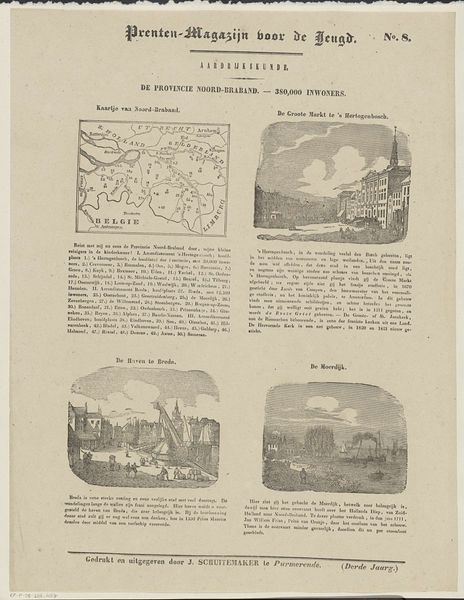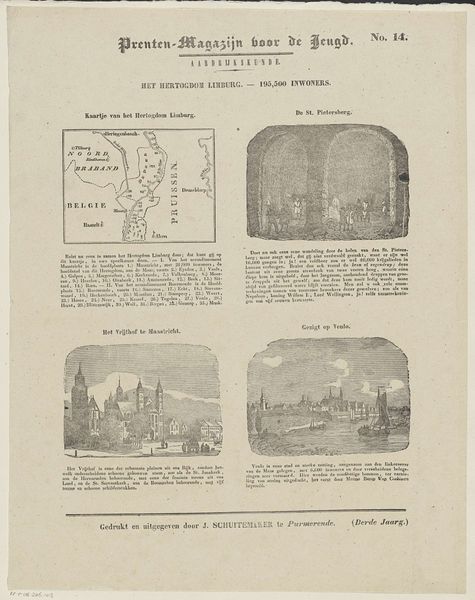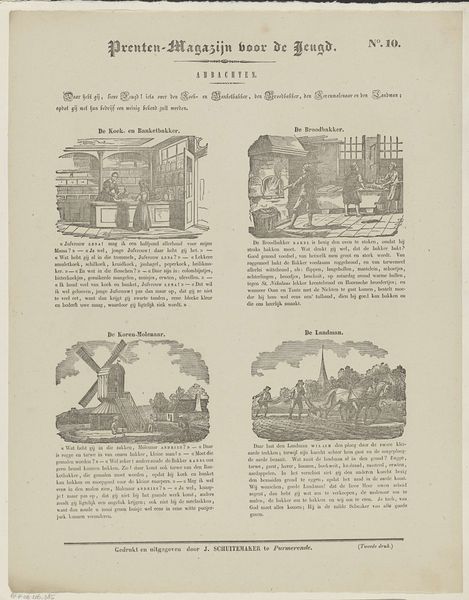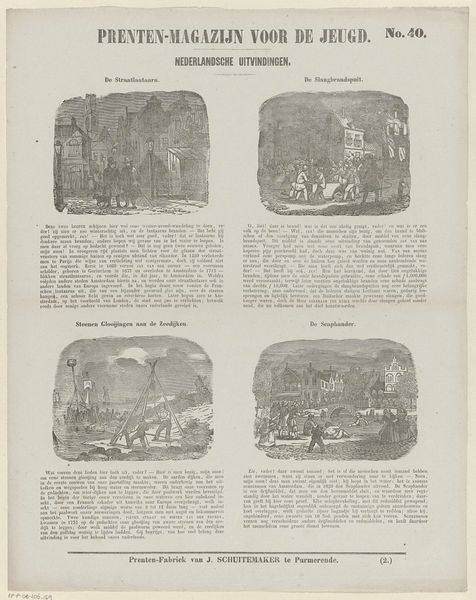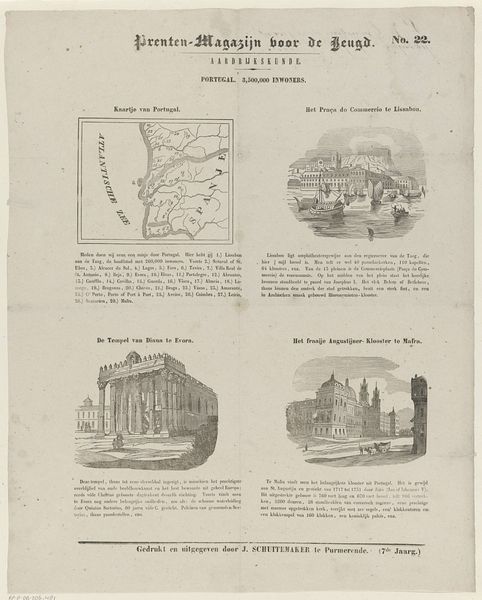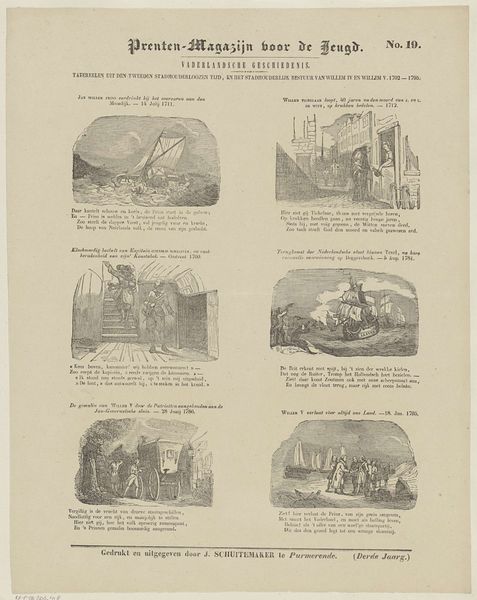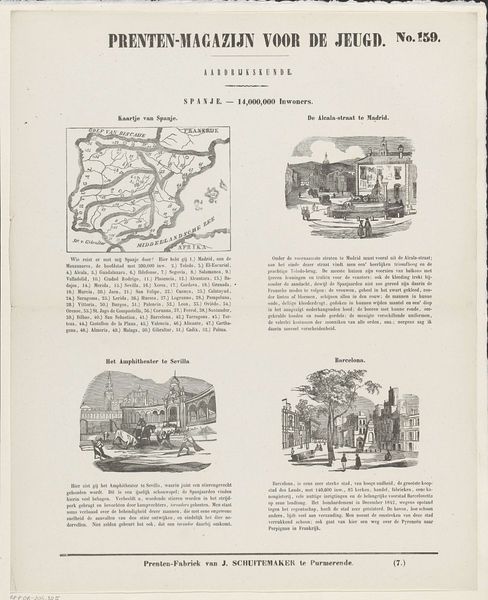
graphic-art, print, paper, engraving
#
graphic-art
#
dutch-golden-age
# print
#
paper
#
history-painting
#
engraving
Dimensions: height 425 mm, width 334 mm
Copyright: Rijks Museum: Open Domain
Curator: Editor: This is "De provincie Zuid-Holland. 526,000 inwoners", an engraving from 1842 by Willem Bal, currently held in the Rijksmuseum. It's packed with information and little vignettes – almost like an infographic from that time! I’m initially struck by how much text is incorporated within the image itself. How would you begin to unpack this from a formalist perspective? Curator: Well, consider first the relationships between the components. Observe how the cartographic representation of Zuid-Holland at the upper-left is echoed by architectural views and figural groupings in the other quadrants. Notice how line is employed throughout—uniform and precise—serving a dual purpose. What could that be? Editor: It seems to create both representational depth and an overall sense of graphic unity. Everything is delineated with a similar mark-making, preventing any one section from visually dominating. Is it the lack of a hierarchy you’re pointing at? Curator: Precisely. See how the uniform application of line, its direction and density, generates consistent value and, with it, an egalitarian composition. There's a dialogue occurring, not between images and viewers, but amongst themselves. Ask yourself, does that balance reflect a larger societal value from that era? Editor: Interesting. Perhaps a visual articulation of unity and progress, or at least an aspirational vision, communicated through the graphic language of the time. Thank you for showing me how the balance in this work speaks volumes! Curator: And in turn, considering historical context alongside its structure enhances our grasp of art's dynamic function within society. A print like this shows that all elements of design create symbolic meaning.
Comments
No comments
Be the first to comment and join the conversation on the ultimate creative platform.
